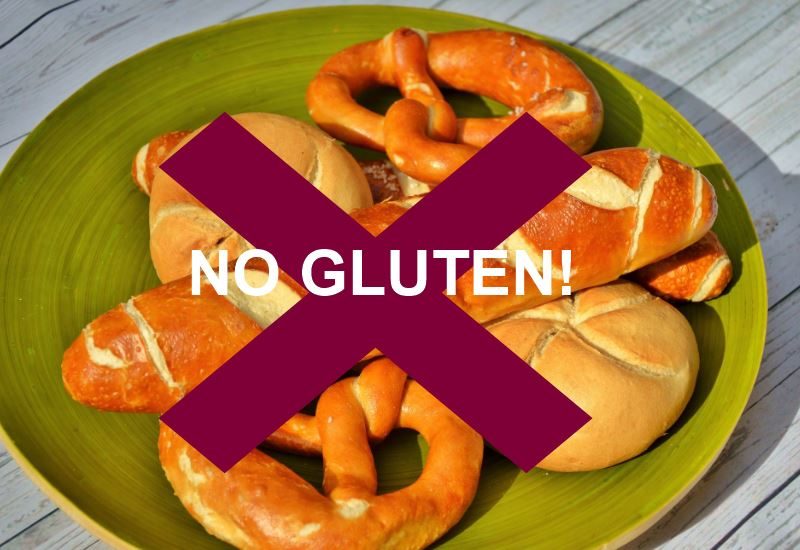If you are suddenly seeing a surge in the number of gluten-free foods, and restaurants in the region catering to this niche dietary category, you are not alone.
The last few years have seen the emergence of a new generation of gluten-free health freaks who would not touch wheat products with a barge pole. You may be forgiven for assuming that gluten-free is synonymous with a healthy diet. Truth be told, that is not the case, as you will find out. Going gluten-free is not a shortcut to losing weight; there are many intricacies involved in a diet of this type. For starters, we need to know everything there is about the substance is question, gluten.
So what does gluten mean?
Gluten is a family of proteins found in grains like wheat, rye, spelt and barley. Of the gluten-containing grains, wheat is by far the most commonly consumed. When flour is mixed with water, the gluten proteins form a sticky network that has a glue-like consistency. This glue-like property makes the dough elastic, and gives bread the ability to rise when baked. It also provides a chewy, satisfying texture to the dough.
Apart from wheat, rye and barley, gluten can be found in wheat germ, bulgur, couscous, farina, kamut, matzo, semolina, triticale, malt, soy sauce, cereal, baked goods, blue cheese, sauce mixes, some marinades, breaded foods and many fried foods.
Packaged foods more often than not contain references to gluten and allergens in the ingredients list. However, if it doesn’t, mention of wheat, rye or barley should warn you about its gluten content.
How did the gluten-free diet come about?
A gluten-free diet, simply put, is a diet that excludes the protein gluten. While in recent years it has come to be followed by all and sundry because of its perceived weight loss benefits, the diet is typically targeted at those individuals who suffer from non-celiac gluten allergy, celiac disease and wheat allergies. Some of the common symptoms of having an allergy to gluten include skin rashes, abdominal pain, nausea, migraines and digestive disorders such as gas and bloating.
The important thing to bear in mind is that apart from being a succour for people suffering from gluten sensitivity, there is no pressing reason to jump on to the gluten-free bandwagon. However, some reports and studies suggest that the diet may have some benefits for the general public too, such as the following:
- Improves cholesterol levels
- Promotes digestive health
- Increases energy levels
- Eliminates unhealthy and processed foods from your diet
- More likely to eat fruits and vegetables because they are all gluten-free
- Reduces your risk of heart disease, certain cancers, and diabetes
- Helps ward off viruses and germs as many foods you will now eat will contain more antioxidants, vitamins, and minerals
- Promotes healthy weight-loss
- Improves health of people with irritable bowel syndrome and arthritis
- Distinctly improved awareness of foods that can have an adverse effect on your health
If you do plan on adopting a gluten-free diet to reap some of the benefits mentioned above, a little research on wheat alternatives and where to find them will go a long way in assisting you.
Gluten-Free Alternatives
There are a variety of grain, flour and starch alternatives that naturally do not contain gluten and thus can be consumed by those on a gluten-free diet. These include:
- Amaranth
- Brown, white and wild rice
- Buckwheat
- Almond meal flour
- Coconut flour
- Corn
- Cornstarch
- Guar gum
- Millet
- Pea flour
- Potato flour
- Potatoes
- Quinoa
- Sorghum
- Soy flour
- Teff
If you have chosen to go the gluten-free way, it is imperative to weigh in the risks you may run of missing out on vital nutrients and vitamins too. The gluten-free diet can also come with the risk of malnutrition because it’ll mean skipping out on healthy whole grains. To make up for this fibre shortage, you’ll have to dedicate yourself to eating other grains, such as brown rice or quinoa, or certain fruits, vegetables, and beans.
Additionally, the ingredients used to replace gluten sometimes result in foods that are tasteless or unappealing. Because of this, many of these products contain higher levels of sugar, salt, and other additives to make them more palatable.
Therefore, gluten-free diets don’t necessarily mean you’ve chosen a healthier route unless you have a well-charted diet plan that takes into consideration all your nutrient needs. With all the benefits and risks of the diet made clear, the choice is yours to make.








